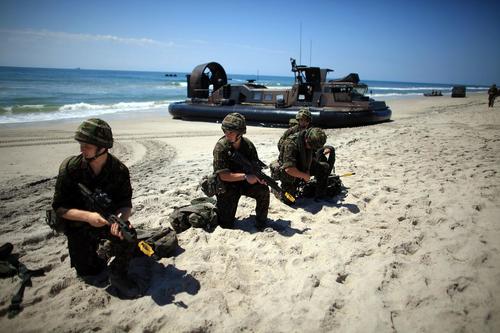Given ongoing US tensions with Beijing especially in the South China Sea region, the United States Marines are increasingly returning to the branch’s original mission of amphibious warfare reminiscent of the island campaigns of WWII in the Pacific.
It’s being reported this week that this is precisely the type of training being conducted in islands of the Japanese mainland. “The Marine Corps is stepping up training in Japan for island-based conflict in the Western Pacific, putting it at the leading edge of a pivot by the US to face the military challenge from China,” The Wall Street Journal reports.

The report details that a new emphasis on small-scale, rapid deployments will make US troops and positions harder to locate. This is very different from the post 9/11 ‘war on terror’ environment which saw massive deployments and large-scale occupations in Afghanistan and Iraq.
The report quoted Lt. Col. Neil Berry, commander of the third battalion-Eighth Marine Regiment, based out of Camp Lejeune, N.C. as saying, “We’re trying to get away from tents, from computer screens, because, 1.) it’s very stationary and, 2.), it has a huge electromagnetic signature.”
The WSJ detailed further what the island training looks like in practice:
At one of a series of recent exercises, a few dozen Marines faded into long grass after touching down in two CH-47 Chinook helicopters, followed by Japanese soldiers arriving in two Osprey tilt-rotor aircraft. Their simulated mission: avoiding detection and recapturing a port on an island inside the range of much of the enemy’s missiles and artillery.
The report added: “The exercise reflected a new emphasis on small, dispersed troop units and command centers, which are intended to be harder to locate and destroy.”
Thus in addition to simulating the type of small militarized island environment as exists among contested island-chains in the South China Sea (also built up through the PLA’s series of man-made islands), the Marine Corps is preparing to evade detection by China’s advanced radar and technological capabilities.
Over the past year especially, the US has stepped up both aerial patrols and US Navy sail throughs of the region, also near and through the disputed Taiwan Strait, in “freedom of navigation” exercised aimed at signaling Beijing.